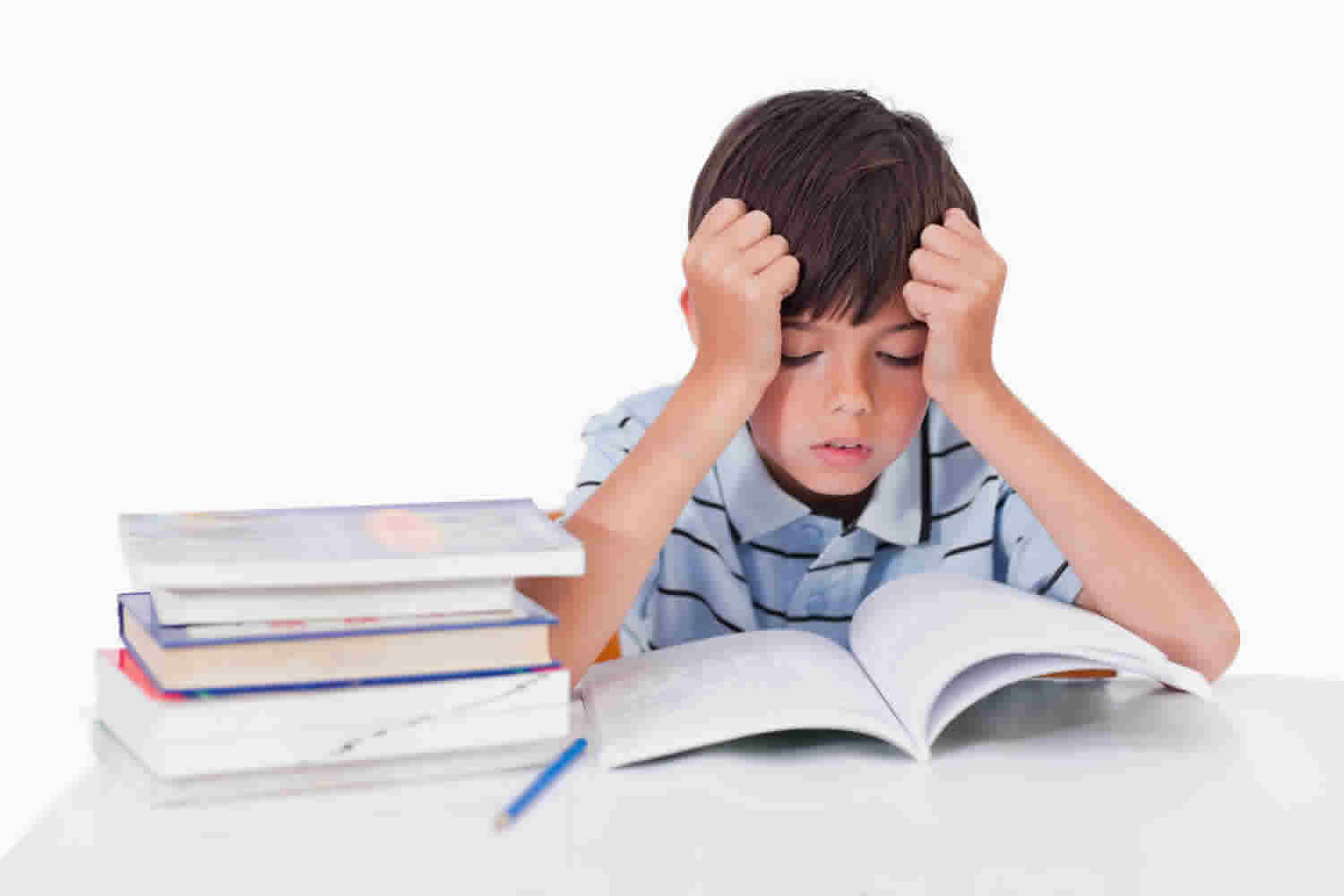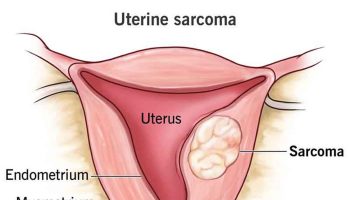Non verbal learning disorder
Non-verbal learning disorder (NVLD) also known as nonverbal learning disability (NLD), is described as a subtype of specific learning disability where the source of the disability is a difficulty in processing nonverbal information 1. Non-verbal learning disorder affects a child’s ability to recognize and interpret patterns in facial expression, body language, and other forms of nonverbal communication. Kids with non-verbal learning disorder are often hyper-verbal, but have trouble correctly interpreting social situations. A child with non-verbal learning disorder may also have poor physical coordination and struggle with problem solving, organizing thoughts, planning, and executive functions. Issues connected to non-verbal learning disorder can lead to trouble with math and problem solving as well as reading comprehension 2. Many characteristics associated with nonverbal learning disability are similar to those that describe other, more “established” disorders, such as Asperger’s Syndrome and specific learning disabilities 2.
Non-verbal disability has been proposed to describe children who do not have severe language problems and are able to acquire reading and writing skills, but present with “persistent deficits in right-left orientation and difficulties with constructional tasks and arithmetic, whose deficits are non-verbal and who are unable to grasp the significance of many aspects of the environment” 3. Kids who have non-verbal learning disorder do not have trouble decoding language, reading, or learning information in a rote way. The problems these children have involve, all the other kinds of learning, all the stuff that involves understanding information—relationships, concepts, ideas, patterns. These deficits—all things related to the right hemisphere of the brain—can affect a child’s ability to do a variety of things. Physical coordination, social interaction, problem solving, organizing thoughts, planning—all these things can be challenging. They seem very different, but the unifying theme is that each requires the ability to recognize patterns or concepts and then apply them to new situations.
Individuals thought to have non-verbal learning disorder typically demonstrate strengths in the following areas:
- Intelligence quotient (IQ) which is typically in the average to above-average range. Children with non-verbal learning disorder tend to have verbal IQ scores that are higher than their performance scores, a factor that distinguishes them from kids with language-based learning disabilities such as dyslexia.
- Rote verbal and expressive and receptive language skills, such as the ability to memorize and repeat a great deal of information presented to them in spoken form. They also exhibit early language development.
- Auditory processing skills, which entail learning better through hearing information, rather than seeing it (visual processing)
Individuals thought to have non-verbal learning disorder generally experience difficulties in several broad categories:
- Motor skills, such as graphomotor skills (related to printing and cursive writing), physical coordination, and balance
- Complex conceptual skills involved in problem-solving, understanding cause-effect relationships, and seeing the “big picture” versus focusing on details
- Visual-spatial-organizational skills, such as visualizing information and understanding spatial relations
- Social skills, such as using and understanding nonverbal communication (e.g., gestures, facial expressions), dealing with new information and situations, transitioning between situations, conversation skills, and understanding the nuances of spoken language (e.g., hidden meanings, figurative language)
- Activity level: hyperactivity (when younger), and hypoactivity (as they grow older)
The child with nonverbal learning disability presents with problems in visual, spatial, and organizational skills and tactile perception, difficulty recognizing and processing nonverbal cues, and poor motor performance but with strengths in rote verbal skills. Non verbal learning disorder isn’t an official diagnosis like ADHD and autism—in fact many kids who have non-verbal learning challenges have those diagnoses. Non verbal learning disorder may be the most overlooked, misunderstood, and under-diagnosed learning disability. Experts say focusing on non verbal learning disorder explains what’s happening with kids and how to help them learn better than those diagnoses.
Traditionally, these children were recognized by their difficulties in arithmetic which presented a stark contrast with their strengths in spelling and decoding text 4. They also exhibited a split between their verbal IQ and performance IQ scores with the verbal IQ being significantly higher than performance IQ 5. Over time, however, diagnostic criteria have evolved and the broadened definition of the nonverbal learning disability syndrome has led many to question the utility and uniqueness of the nonverbal learning disability diagnosis. In addition, shifting diagnostic standards have made research results difficult to replicate. In short, the research to date leaves many unanswered questions about (1) the definition of the nonverbal learning disability syndrome, (2) the pervasiveness of the academic, social and psychopathological difficulties, (3) the source of the nonverbal learning disability syndrome, and (4) the degree to which it overlaps with other conditions.
There are no population-based studies addressing the prevalence of non-verbal learning disorder 3. Still, learning disabilities are thought to affect an estimated 10% of school-age children, with 1% prevalence of non-verbal learning disorder in this group 6 and to account for an estimated 10% of learning-disability-related medical appointments. Non-verbal learning disorder is much less prevalent than language-based learning disorders such as dyslexia 7.
As with many learning disorders, the symptoms of non-verbal learning disorder vary from child to child. The first step to helping kids with non-verbal learning disorder is getting a comprehensive assessment to help determine your child’s individual needs. Once his symptoms are identified, learning professionals and therapists can use his profile to develop appropriate supports. Children with non-verbal learning disorder benefit from intensive practice at pattern recognition and organizing thoughts, as well as coaching in understanding social patterns and expectations.
Do symptoms of non-verbal learning disorder get better with age?
Typically, the issues associated with non-verbal learning disorder get worse or at least become more apparent — as the child gets older, making early intervention important. Symptoms become more noticeable as the child encounters more social situations and has to apply abstract versus literal thinking 2.
How might having non-verbal learning disorder affect a child’s academic performance?
Students thought to have non-verbal learning disorder generally do well in areas that relate to concrete thinking but have difficulty in areas that relate to abstract thinking. The research done to date has yet to prove how the cognitive limitations of non-verbal learning disorder directly impact a child’s academic performance. Nevertheless, consider how having non-verbal learning disorder might apply to math, reading, and conceptual learning.
- It may be difficult for a child with non-verbal learning disorder to understand math concepts and solve problems, but he may have no trouble applying a mathematical formula which he has been explicitly taught. Additionally, due to his poor spatial-organization ability, he may have difficulty aligning problems on a page to solve them correctly.
- With regard to reading, a student with non-verbal learning disorder may have strong word decoding skills, but may experience difficulty with reading comprehension, as he may miss inferences, have difficulty visualizing a story, and may not see the “big picture.”
- Children with non-verbal learning disorder also experience difficulty when information on assignments and tests is not presented in the exact format in which it was taught. For example, if a child with non-verbal learning disorder learned about neighborhoods in social studies using a matching format he may have trouble answering true/false questions about the same information.
Because of their uneven profile of strengths and challenges, children with non-verbal learning disorder may experience difficulty in their interactions with adults and peers. Children with non-verbal learning disorder usually have strong verbal skills; consequently, adults may hold unreasonably high expectations of them. Peers may not understand a child with non-verbal learning disorder; for example, peers may be unaware of the child’s inability to understand nonverbal communication and therefore may not know how to interact with him. A child with non-verbal learning disorder tends to take things literally and often misses the point of humor or misinterprets good-natured teasing.
Does having a diagnosis of non-verbal learning disorder mean a child is eligible for special education services?
Children who have been identified as having non-verbal learning disorder may qualify for special education services under the “learning disabilities” or “other health impairments” category included in the Individuals with Disabilities Education Act or under Section 504 of the Rehabilitation Act. At this time, only one state, New Hampshire, appears to recognize nonverbal learning disability as a specific learning disability. Because the categorization of non-verbal learning disorder varies from state to state, parents will want to check on the education laws in their particular state.
Is there consensus among professionals regarding the validity of non-verbal learning disorder as a syndrome?
At this time, very few schools will acknowledge that a child has non-verbal learning disorder based on neuropsychological test results alone 2. However, if standardized testing reveals a discrepancy between the child’s IQ and his academic performance, some schools will refer the student for special education services.
Nonverbal learning disorder symptoms
Non-verbal learning disorder symptoms:
- An inability to read non-verbal social cues, such as expressions and body language.
- Difficulty identifying and understanding sarcasm
- Difficulty recognizing emotions in others
- Trouble understanding visual information
- Trouble grasping spatial relationships and judging distance
- Poor physical coordination
- Difficulty prioritizing information
- Poor problem solving skills
- Trouble with higher-level math concepts
- Hyper-talkativeness
- Difficulty breaking down a project into smaller pieces, or figuring out what steps need be taken to get something done.
- Poor organizational and planning skills
Typically, people with nonverbal learning disabilities show:
- excellent memory for things they hear
- poor memory for things they see
- good reading ability
- very poor arithmetic ability
- excellent verbal expression and verbal reasoning
- problems with written expression (often because of poor handwriting)
- problems with sense of direction, estimation of size, shape, distance
- problems reading facial expressions, gestures, social cues, tones of voice
Nonverbal learning disabilities often go undiagnosed because reading ability tends to be regarded as the chief indicator of academic well-being by most public school systems. Because it has a pronounced effect on social interaction, as well as academic performance, nonverbal learning disabilities present a unique challenge to parents, teachers and adult consumers.
The chief characteristics of nonverbal learning disabilities include:
- tactile-perceptual deficits, usually on the left side of the body
- coordination difficulties, again often more marked on the left side of the body
- problems with visual-spatial organization
- extreme difficulty adapting to new and complex situations
- reliance on rote behaviors (which may or may not be appropriate) in new situations
- trouble understanding nonverbal feedback in social situations
- problems with social perception, social judgement and social interaction
- distorted sense of time
- very strong rote verbal abilities (e.g. large vocabulary)
- reliance on language as the primary means for social relating, information-gathering and relief from anxiety
- difficulties with arithmetic and, later, with scientific concepts and theories
- inattention and hyperactivity earlier in childhood; and social withdrawal and isolation later
When people with nonverbal learning disabilities are assessed, typically, their performance IQ is significantly lower than their verbal IQ, because of visual-spatial weaknesses.
Non-verbal learning disorder signs and symptoms do not match those of any well-described condition; therefore, difficulties in characterizing this condition remain to this day 8. Non-verbal learning disorder is a specific condition characterized by difficulties in motor coordination, somatosensory perception, visuospatial cognition, inductive and arithmetic reasoning, cognition and social skills 9. The major feature of non-verbal learning disorder is the discrepancy between verbal IQ and non-verbal (performance) intelligence quotients (IQ), controlled by the left and right brain hemispheres, respectively 10.
The three major areas of dysfunction in non verbal learning disorder include motor and visuospatial abilities, organizational skills and social skills 11.
Children and adolescents with non verbal learning disorder often have good reading and writing skills, but have difficulties with inferential reasoning, reading comprehension and math 12.
Affected children have difficulties understanding cause-effect relationships, poor reasoning and problem solving skills and difficulties understanding complex or abstract ideas, and therefore tend to have executive functioning issues 13.
There are five areas in which children with non-verbal learning disorder show weakness. Not all children have weaknesses in all areas.
1. Visual and spatial awareness:
Many kids with non-verbal learning disorder have trouble understanding visual imagery. For example when they are asked to copy a shape like a cube they produce profound distortions. These kids can’t accurately perceive the cube, the forms that make up the cube, and the relationships between them. Hence they can’t copy it.
They also have difficulty evaluating visual-spatial information. This means they have trouble grasping the relationships between things they see and having a clear sense of where they are. This can make them physically awkward.
2. Higher-order comprehension:
Higher-order comprehension is the ability to identify the main idea in something, the details that support the main idea, and the relationships among them. This affects kids’ ability to comprehend reading, and write or tell a story effectively.
It also affects taking notes. Some kids essentially take down everything the teacher says because they don’t know what’s important and what not to take down. Other kids don’t know what’s important so they take down nothing, and people think they aren’t paying attention. Or they take down all the wrong things.
3. Social communication
Most kids with non-verbal learning disorders have trouble reading emotion in facial cues and body language, so they often don’t know what’s going on in social interactions. They miss the social patterns that other kids pick up automatically, so they don’t know what’s appropriate behavior in a given situation.
Difficulties with social communication is one reason why kids with non-verbal learning disorder often focus—sometimes obsessively—on technology. In chat rooms or in a video game they don’t have to deal with all the nonverbal stuff.
4. Math concepts
Many kids with non-verbal learning disorder are very good at rote learning, and they are able to do well in math just by memorizing data. But as they get older they struggle to solve more advanced mathematical problems that are based on recognizing concepts and patterns. Even with a problem they’ve seen before, if it’s approached differently or modified slightly, they have trouble recognizing it.
5. Executive functions
Executive functions are a set of skills you use to organize your thinking, plan and carry out actions, and figure out how to solve problems. Most children with non-verbal learning disorder have weaknesses in these organizing and planning functions. For instance they struggle with breaking down a project into smaller pieces, or conceiving steps that need to be taken to get something done.
These kids have trouble figuring things out—in fact they don’t really know what figuring something out means. Parents and teachers have to help them learn to do that through the step-by-step process.
Young children
Young non-verbal learning disorder children tend to stray from home or groups and get lost easily. They often spill things at mealtime because of problems with motor coordination and have trouble dressing themselves for the same reason. Problems with spatial skills appear in a weak understanding of nonverbal information (e.g. pictures, cartoons, passage of time) and nonverbal tasks like puzzles.
Many children with non-verbal learning disorder use words in an adult fashion and learn to read before school age because of their auditory strengths. Thus, they often try to gain information about the world around them by asking endless questions of adults rather than by exploring on their own. The inaccuracy of their visual perception, physical awkwardness and difficulty integrating information in space and time make it harder for them to make sense of the physical world. This compensation can compound the problem, however, for the less the child engages in physical exploration, the less she/he learns about relationships between objects in space.
Academic Issues
Students with non-verbal learning disorder generally appear to possess above-average cognitive skills because of their verbal strengths, but often show academic difficulties as they reach secondary levels.
Spatial and coordination problems make printing and writing, learning math, telling time, reading and coloring maps and keeping one’s place on the page difficult from early grades. By secondary school more complex verbal language is based on nonverbal processes like spatial relationships (in science, for example), logical ordering, and sequencing (both skills necessary for writing essays.) This can cause problems in subject areas other than math. For example, students often experience difficulties with sense of time, arranging written material on a page, making change, and sewing and typing, all of which demand good spatial awareness.
Throughout the school years, children with non-verbal learning disorder are often inattentive and poorly organized because they have trouble integrating and interpreting incoming information. They tend to pay attention to each detail as it comes in, rather than combining them into more meaningful wholes. The effort quickly leads to information overload, with which these students will often cope by clinging to familiar habits and routines that help them to structure their world. Sometimes this means of coping appears as misbehavior.
In later secondary and post-secondary education, information is frequently presented in lecture form. For students with non-verbal learning disorder, problems arise because they have to integrate information they hear with the act of writing, already difficult because writing is often awkward and slow. In addition, students who attend equally to individual details as they appear have enormous difficulty separating important from unimportant information.
Teachers can support students with non-verbal learning disorder by outlining material to be covered, using overheads containing central points while lecturing, providing clear schedules of the day’s events, breaking down complex tasks into smaller, sequenced pieces, using discussion rather than lectures to develop and integrate ideas, and using students’ strengths in rote learning to help them develop habits and routines to organize themselves and their work.
Social and emotional issues
Possibly the biggest area of concern for children and adults with non-verbal learning disorder is social skills. One result of having trouble processing nonverbal and spatial information is missing or misinterpreting subtle social cues like facial expressions, gestures and tones of voice. For example, a phrase like “nice going” means something different when you’ve just dropped a ball or tripped over a skipping rope (again) than when you’ve gotten a perfect score on a spelling test. Confusing the two can spell “disaster” on the playground.
Unlike a student who has difficulty reading but does well with social and sports activities, students with non-verbal learning disorder are affected in all areas. This can lead to social isolation which children will sometimes try to alleviate by interacting only with adults, who are more appreciative of their verbal strengths and less concerned about physical awkwardness or violations of social conventions. However, because children with non-verbal learning disorder are highly verbal, parents and teachers tend to attribute their academic and social failure to laziness or poor character. This can lead to emotional problems like depression and anxiety that may be expressed in physical ways (e.g. nail and cuticle biting, headaches, stomach problems, phobias).
Parents and teachers can help children with non-verbal learning disorder learn more effective social skills by talking about social rules and playing games in which children guess the feelings that go with facial expressions and tones of voice, and figure out appropriate responses. Friends and spouses of adults with non-verbal learning disorder can help by pointing out social rules and articulating the information often carried by a look or a gesture.
Nonverbal learning disorder diagnosis
The diagnosis of non-verbal learning disorder is normally made by neuropsychologists and clinical psychologists. Such professionals assess non-verbal learning disorder using a battery of tests that cover abilities such as:
- intelligence
- motor and psychomotor
- tactile-perceptual
- visual-spatial-organizational
- auditory-perceptual
- auditory and visual attention/memory
- problem solving
- language
- academic achievement
- personality/adaptive behavior
Non-verbal learning disorder is difficult to diagnose because its manifestations change significantly depending on the child’s age. The diagnosis of non-verbal learning disorder is based on the identification of deficits in social perception, social judgment and social interaction skills 14, given such difficulties are secondary to impaired visuospatial development 15 and pervade diagnostic strategies based on recognition of significant perception problems, faulty understanding of facial expressions, tone of voice and speaker’s intention 16.
Based on a review of the literature by Mammarella and Cornoldi 17, the diagnostic criteria used for children with nonverbal learning disabilities were identified as follows:
- (a) low visuospatial intelligence;
- (b) discrepancy between verbal and visuospatial intelligence;
- (c) visuoconstructive and fine-motor coordination skills;
- (d) visuospatial memory tasks;
- (e) reading better than mathematical achievement; and
- (f) socioemotional skills.
Overall, Mammarella and Cornoldi 17 results showed that the most important criteria for distinguishing children with non-verbal learning disorder from controls were as follows:
- A low visuospatial intelligence with a relatively good verbal intelligence, visuoconstructive and fine-motor coordination impairments, good reading decoding together with low math performance.
- Deficits in visuospatial memory and social skills were also present.
- A preliminary set of criteria for diagnosing non-verbal learning disorder was developed on these grounds. It was concluded, however, that-although some consensus is emerging-further research is needed to definitively establish shared diagnostic criteria for children with non-verbal learning disorder.
Low scores in specific motor performance tests involving both hands suggest bilateral brain involvement and confirm the presence of motor coordination impairments, with worse performance in the right hemisphere compared to the left. Children with non-verbal learning disorder are described as clumsy and uncoordinated 18.
Visuospatial deficits are the major characteristic of children with non-verbal learning disorder, even in the absence of severe motor problems. Differences between verbal and performance (non-verbal) IQ scores are not a requisite for the diagnosis of non verbal learning disorder; still this finding has been particularly emphasized in affected children 19.
In general, the deficits involved in non-verbal learning disorder get worse as the child gets older. For example, a preschooler with non-verbal learning disorder may have exceptional verbal skills and speak like a little adult. During his younger years, the challenges a student with non-verbal learning disorder faces are often overlooked because of his high intelligence level and verbal strength 20. As the child matures and encounters school work and social situations that require abilities such as abstract thinking and nonverbal communication, his deficits in those areas will become more apparent and problematic.
Difficulties in the identification and characterization of individuals affected with non-verbal learning disorder remain, as do difficulties in confirmation and quantification of motor, socialization and learning deficits, and interhemispheric asymmetry. According to a literature review 21, interhemispheric asymmetry, deficits in fine motor and visuoconstructive coordination, difficulties with visuospatial memory tasks and math, and social emotional impairments are the most significant factors in non-verbal learning disorder. A magnetic resonance imaging study 22 comparing different portions of the corpus callosum revealed significantly smaller splenium in children affected with non-verbal learning disorder compared to children in all other groups studied (control children, children affected with attention deficit hyperactivity disorder predominantly inattentive and others, and children with high-functioning autism). Findings in the non-verbal learning disorder group in that study were associated with low performance IQ, but not with low verbal IQ scores.
Nonverbal learning disorder treatment
Children who have non-verbal learning disorder have a wide variety of learning challenges. All of them involve trouble recognizing patterns, but there are many different kinds of patterns they may have trouble with: visual patterns, social patterns, abstract reasoning, math concepts, organizational skills.
Some children are affected in a lot of areas, others in few. So the first step in helping kids with non-verbal learning disorder is to understand how it affects each individual child. What are the specific core deficits a particular kid struggles with?
What to do if your child is diagnosed with nonverbal learning disorder
- Find a Specialist: A certified non-verbal learning disorder expert can work directly with your child on effective remedial methods including planning, studying, written expression, social cognition, and interpersonal communication. Look for a specialist who has full certification and continuing professional development in the area of nonverbal learning disorder 23.
- Request Classroom Accommodations: Talk with your child’s teacher about making special accommodations for your child, for example 23:
- For memorization activities, substitute copying text with active verbalization.
- Simplify the layout of test answer sheets and make graph paper available for math assignments.
- Provide one-on-one assistance for fine motor tasks such as folding or cutting with scissors.
- Create an Individualized Education Plan: A formal, detailed Individualized Education Plan (IEP) establishes goals and accommodations for your child within the classroom. Work with your child’s teachers and administrators to document the resources and evaluations your child needs to stay on track. Always request a copy of your child’s Individualized Education Plan.
There are a number of therapies and educational strategies that can help your child manage and work around non-verbal learning disorder symptoms. These include:
- Social skills groups to teach kids how to handle social situations such as greeting a friend, joining a conversation, and recognizing and responding to teasing.
- Parent behavioral training, run by a psychologist, to help parents learn how to collaborate with teachers. It also can teach parents how to help kids with social skills in playdates and extracurricular activities.
- Occupational therapy to build tolerance for outside experiences, improve coordination and enhance fine motor skills.
- Cognitive therapy to help deal with anxiety and other mental health issues.
- Your child’s school to determine what services might be available.
Assessing deficits
Assessment is the first important step. Each student with non-verbal learning disorder is assessed in five areas:
- Visual and spacial awareness,
- Higher-order comprehension,
- Social communication,
- Math concepts, and
- Executive functions.
This is a critical step, because most children and most of their parents, come into the school not understanding what makes it so difficult for them to learn. Once children get a clear idea of their particular learning profile, they feel both relieved and empowered. Instead of a laundry list of symptoms that makes them just want to give up and quit, they have a learning profile that teachers can use to teach specifically to them.
It also has a surprisingly powerful emotional benefit. Because parents and teachers are trying hard to understand them, children feel, often for the first time, understood. And that can shockingly quickly change the landscape of who they are. Finally they know what they need, how to ask for help, and what to expect of themselves.
Teaching the missing skills
Once a child’s individual non-verbal learning disorder symptoms are identified, he/she is put together with other children who have the same core deficits. That also has a positive effect on students. For the first time they are in class with other students who are very much like them. They’re not alone—and teachers can focus on developing the specific skills they’re lacking, using every subject area in the curriculum.
And the intervention is consistent, a crucial factor. Each of their teachers in each subject area will address those deficits in the same way, using the same instructional language. Just like when you give a dyslexic kid a lot of drill and practice on the rules of language, you’re giving children a lot of immersion and practice in conceptualizing their experience into main idea versus detail, what’s essential and what’s not.
Using scripts
Whether they’re studying biology, the beginnning of World War II, or Huckleberry Finn, classwork focuses on taking things that might appear unstructured to students, and finding the pattern. Other kids do this intuitively, but kids with non-verbal learning disorder have to be taught these patterns, and then use them to understand new or complicated things.
Eventually, the hope is, they become so conscious of patterns and scripts that even when they don’t know the script for a given situation or problem, they will start to look for it on their own.
And if children find themselves in a situation where they don’t have a script, and they fail, they know that they need to figure out what the pattern is, what the step-by-step is, so it won’t happen the next time.
Social learning
Social communication is also based on knowing the script. If a child is having a social misunderstanding with a peer, a teacher doesn’t see that as separate from understanding concepts in history class. Teachers do a post mortem with the student to figure out what they missed, or misread, about the situation. Teachers take the situations, analyze them, help the child to understand what really happened, do it over and over again and again until he/she internalizes the pattern. But, compared to other patterns, social ones are the most difficult because they’re so emotionally charged. When kids feel wounded and hurt and victimized, and they respond to that emotionally, they often get into not very teachable spaces.
What parents can do
Parenting a child with non-verbal learning disorder can be challenging, but there are many things you can do at home to help your child manage symptoms and learn social skills. You can also try some of the strategies from behavior experts. These steps can help you make positive changes in your child’s life and in your family life.
- Think about how you say things. Remember that kids with non-verbal learning disorder have trouble sensing sarcasm and tone of voice, and they’re likely to take instructions literally. For example, if you say, “Don’t let me see you playing with that toy,” he might continue playing with the toy but turn his back so you can’t see him. Give clear instructions such as, “Please put that toy down and come over here.”
- Help with transitions. Kids with non-verbal learning disorder tend to dislike change because it’s hard for them to understand. They may not have the abstract thinking skills needed to envision what’s going to happen next. You can prepare your child for a change in routine by using logical explanations. Instead of saying, “We’re leaving soon to have dinner with Grandma,” try “We’re going to eat dinner at Grandma’s house tonight because it’s her birthday. We need to leave in an hour.”
- Keep an eye on your child. Kids with non-verbal learning disorder can become overwhelmed by too much sensory input, such as noise, smells, sounds and temperature. Try to avoid situations that could trigger those reactions in your child.
- Encourage playdates. Help your child find kids who are interested in the same things he enjoys, whether it’s comic books or cooking. Set up one-on-one playdates at your home, so your child can get social experience in a familiar setting. Make sure to keep the playdate structured, organizing activities to keep your child and his friend busy. It’s also a good idea to plan playdates for a time of day when your child tends to be on his best behavior.
What can make the journey easier
Whether you’re just starting your journey or are well on your way to understanding non-verbal learning disorder, there are many ways you support your child.
- Take notes. Keep track of the behaviors and symptoms you see in your child and when and where they happen. Your observations will provide valuable information for the professionals who can help your child.
- Take your notes to your child’s doctor to discuss possible next steps. That might include referrals to a psychologist who can conduct a comprehensive evaluation and figure out a treatment plan.
- Talk with your child’s teacher to see what problems your child is having in the classroom. Ask about what interventions have been used and which, if any, are effective. You also may want to talk to the school about whether your child may need special education services.
- Connect with other parents. You can find other parents who are dealing with the same issues you are.
Encouraging exploration
When kids who have non-verbal learning disorder find themselves in situations they don’t have a script for, it can be scary and challenging for them. They are likely to act impulsively or incorrectly or withdraw. But protecting them too much from failure can ultimately undermine their potential.
In order to help them learn to handle novel situations with poise it’s important to give kids opportunities to try and fail. They need practice exploring new situations, engaging in problem solving. They’ve got to be allowed to struggle, and stumble in a situation where they have support. They have to learn to recover from failure.
That’s why it’s important that kids with non-verbal learning disorder see adults struggle, too. They shouldn’t think they’re the only person. Everyone have their things at which they’re awkward and uncomfortable. You should talk about that with your child, let him/her know it’s okay, help them to be resilient.
Being transparent about the steps you are going through when you try to solve a problem, for instance, can help kids learn scripts for problem solving. Thinking out loud, demonstrating that you, too, have to figure things out, can demystify the process. Often kids with non-verbal learning disorder don’t really know what figuring it out means.
- Volden J. Nonverbal learning disability. Handb Clin Neurol. 2013;111:245–249. doi:10.1016/B978-0-444-52891-9.00026-9[↩]
- Nonverbal learning disabilities. https://www.greatschools.org/gk/articles/nonverbal-learning-disabilities[↩][↩][↩][↩]
- Wajnsztejn AB, Bianco B, Barbosa CP. Prevalence of inter-hemispheric asymetry in children and adolescents with interdisciplinary diagnosis of non-verbal learning disorder. Einstein (Sao Paulo). 2016;14(4):494–500. doi:10.1590/S1679-45082016AO3722 https://www.ncbi.nlm.nih.gov/pmc/articles/PMC5221375[↩][↩]
- Volden J. Nonverbal learning disability. Handb Clin Neurol. 2013;111:245–249. doi:10.1016/B978-0-444-52891-9.00026-9 https://doi.org/10.1016/B978-0-444-52891-9.00026-9[↩]
- Rourke BP, Dietrich DM, Young GC. Significance of WISC verbal-performance discrepancies for younger children with learning disabilities. Percept Mot Skills. 1973;36(1):275–282.[↩]
- Rourke BP. Syndrome of nonverbal learning disabilities: the final common pathway of white-matter disease/dysfunction? Clin Neuropsychol. 1987;1(3):209–234.[↩]
- Understanding Nonverbal Learning Disabilities. https://www.understood.org/en/learning-thinking-differences/child-learning-disabilities/nonverbal-learning-disabilities/understanding-nonverbal-learning-disabilities#How_can_professionals_help_with_nonverbal_learning_disabilities?[↩]
- Hale J, Alfonso V, Berninger V, Bracken B, Christo C, Clark E, et al. Critical issues in response-tointervention, comprehensive evaluation, and specific learning disabilities identification and intervention: an expert white paper consensus. Learn Disabil Q. 2010;33(3):223–236.[↩]
- Rourke BP, Finlayson AJ. Neuropsychological significance of variations in patterns of academic performance: verbal and visuo-spatial abilities. J Abnorm Child Psychol. 1978;6(1):121–133.[↩]
- Rourke BP, Telegdy GA. Lateralizing significance of WISC verbal-performance discrepancies for older children with learning disabilities. Percept Mot Skills. 1971;33(3):875–883.[↩]
- Harnadek MC, Rourke BP. Principal identifying features of the syndrome of nonverbal learning disabilities in children. J Learn Disabil. 1994;27(3):144–154.[↩]
- Semrud-Clikeman M. Social competence in children. J Educ Res Online. 2012;4(1):158–160.[↩]
- Semrud-Clikeman M, Hynd GW. Right hemispheric dysfunction in nonverbal learning disabilities: social, academic, and adaptive functioning in adults and children. Psychol Bull. 1990;107(2):196–209. Review.[↩]
- Semrud-Clikeman M, Glass K. Comprehension of humor in children with nonverbal learning disabilities, reading disabilities, and without learning disabilities. Ann Dyslexia. 2008;58(2):163–180.[↩]
- Rourke BP. Neuropsychology as a psychosocial science: implications for research and clinical practice. Can Psychol. 2008;49(1):35–41.[↩]
- Semrud-Clikeman M, Fine JG, Bledsoe J. Comparison among children with children with autism spectrum disorder, nonverbal learning disorder and typically developing children on measures of executive functioning. J Autism Dev Disord. 2014;44(2):331–342.[↩]
- Mammarella IC, Cornoldi C. An analysis of the criteria used to diagnose children with Nonverbal Learning Disability (NLD). Child Neuropsychol. 2014;20(3):255–280. doi:10.1080/09297049.2013.796920 https://doi.org/10.1080/09297049.2013.796920[↩][↩]
- Stuebing KK, Fletcher JM, LeDoux JM, Lyon GR, Shaywitz SE, Shaywitz BA. Validity of IQ-discrepancy classifications of reading disabilities: a meta-analysis. Am Educ Res J. 2002;39(2):469–518.[↩]
- Rourke BP. The syndrome of nonverbal learning disabilities: developmental manifestations in neurological disease, disorder, and dysfunction. Clin Neuropsychol. 1988;2(4):293–330.[↩]
- Foss, J.M. (1991). Nonverbal learning disabilities and remedial interventions in Annals of Dyslexia, 41, 128-140.[↩]
- Barkley RA, Fischer M, Smallish L, Fletcher K. The persistence of attention-deficit/hyperactivity disorder into young adulthood as a function of reporting source and definition of disorder. J Abnorm Psychol. 2002;111(2):279–289.[↩]
- Fine JG, Musielak KA, Semrud-Clikeman M. Smaller splenium in children with nonverbal learning disability compared to controls, high-functioning autism and ADHD. Child Neuropsychol. 2014;20(6):641–661.[↩]
- Nonverbal Learning Disorders. http://www.ldonline.org/article/6114/[↩][↩]





